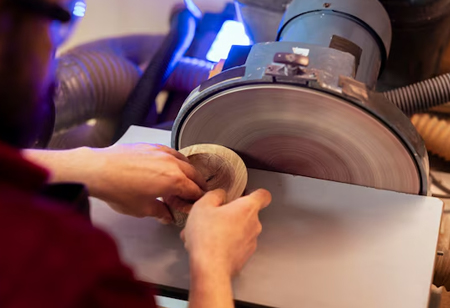
High-speed converting lines need clean, accurate cuts to maintain productivity without producing scrap that eats into already thin margins. Sloppy cutting creates dimensional variations, jagged edges, and waste that slow downstream operations or render products unusable entirely, costing money at multiple points throughout production.
Rotary die cutters excel at precision and efficiency, but their benefits go beyond speed that initially attracts manufacturers evaluating cutting technologies. The real advantages emerge over time through material savings, reduced maintenance, and capabilities that flatbed or other cutting methods simply cannot match at comparable production volumes.
Lesser-known advantages, from material savings to longer tool life, that make rotary cutting the preferred method for many industries using rotary die cutters deserve attention from operations managers evaluating equipment investments. Understanding the full value proposition helps justify costs that seem high until you calculate total ownership expenses and productivity gains.
Consistent, Repeatable Accuracy at High Volumes
Rotary cutting maintains tight tolerances across millions of cycles without the dimensional drift that plagues other cutting methods. The cylindrical tooling rotates at constant speed and pressure, producing identical cuts every time without manual adjustments or recalibration. This consistency matters enormously for products requiring precise dimensions that affect assembly, performance, or regulatory compliance.
Registration accuracy ensures cuts happen exactly where intended relative to printed graphics, perforations, or other features. Rotary systems maintain registration at speeds where other methods lose precision, preventing misaligned cuts that ruin printed materials or create functional problems. Packaging, labels, and medical products demand this accuracy that rotary cutting delivers reliably.
Quality consistency across production runs eliminates the variation that creates sorting and inspection burdens downstream. Every part matches specifications without statistical variation requiring quality checks on samples hoping they represent entire batches. Predictable output simplifies logistics and reduces quality control overhead that other cutting methods necessitate.
Reduced Waste and Better Material Utilization
Nesting optimization places cut patterns closer together, extracting more finished products from raw material rolls compared to less efficient cutting arrangements. Rotary dies allow tight nesting that minimizes scrap strips and trim waste between parts. This efficiency compounds across high volumes, saving substantial material costs that improve profitability without changing product pricing.
Clean cuts without secondary trimming eliminate operations that add labor and create additional waste streams requiring disposal. Rotary cutting produces finished edges in single passes, while other methods might require deburring or edge treatment adding cost and complexity. Eliminating these secondary operations streamlines production and reduces overall manufacturing costs.
Material yield improvements of even small percentages translate to significant savings for operations consuming large material volumes. Saving two percent on material that costs hundreds of thousands annually equals thousands in reduced spending without compromising quality or output. These savings accumulate year after year, funding equipment investments that pay for themselves through waste reduction alone.
Longer Tool Life and Lower Maintenance Costs
Rotary die construction distributes cutting forces across larger surface areas compared to flatbed tools concentrating stress at impact points. This force distribution reduces wear per cycle, extending die life substantially beyond what reciprocating cutting methods achieve. Longer intervals between tool replacements reduce downtime and tooling costs that consume budgets and interrupt production schedules.
Maintenance requirements stay minimal because rotary systems have fewer moving parts and operate at more consistent speeds than presses requiring periodic shock loads. Continuous rotation creates smoother operation than reciprocating motion that generates vibration and mechanical stress. Reduced maintenance means lower labor costs and fewer unplanned stoppages that disrupt production and delay customer orders.
Rebuild economics favor rotary dies that can be resurfaced and returned to service multiple times before requiring complete replacement. Tool investment gets amortized across larger production volumes when dies last years rather than months. Lower annualized tooling costs improve manufacturing economics significantly for operations running high volumes where tooling wear is inevitable.
Design Flexibility for Complex Shapes
Complex geometries cut cleanly with rotary dies that handle intricate patterns other methods struggle to produce accurately. Tight radii, fine details, and irregular shapes come out precisely without the limitations that constrain other cutting technologies. This design freedom allows product innovation that would be impractical or impossible using cutting methods with geometric restrictions.
Multiple operations combine in single die stations, performing cuts, creases, perforations, and embossing simultaneously rather than requiring separate processing steps. Integration reduces handling, speeds throughput, and lowers costs compared to moving materials through multiple machines. Single-pass processing simplifies production and reduces opportunities for damage or misalignment between operations.
Rapid die changes accommodate product variety without the lengthy setup times that limit flexibility on other cutting equipment. Rotary systems swap dies quickly, making short runs economically viable and allowing manufacturers to offer product customization that would be impractical with lengthy changeovers. This flexibility helps manufacturers respond to market demands without sacrificing efficiency.
Conclusion
Rotary die cutters deliver value beyond speed through accuracy, waste reduction, tool longevity, and design flexibility that compound into significant competitive advantages. Understanding these benefits helps manufacturers evaluate long-term ROI rather than focusing only on upfront equipment costs that seem high until total ownership economics get calculated properly.
Operations should evaluate long-term ROI when upgrading cutting equipment by considering material savings, reduced maintenance, improved yield, and increased capability. Equipment purchases justified purely on speed miss the broader value rotary cutting provides across multiple dimensions that affect profitability and operational efficiency for years after installation.
We use cookies to ensure you get the best experience on our website. Read more...